Blog
The Science Behind Choosing the Perfect Winter Jacket
Don’t Judge a Book by its Cover
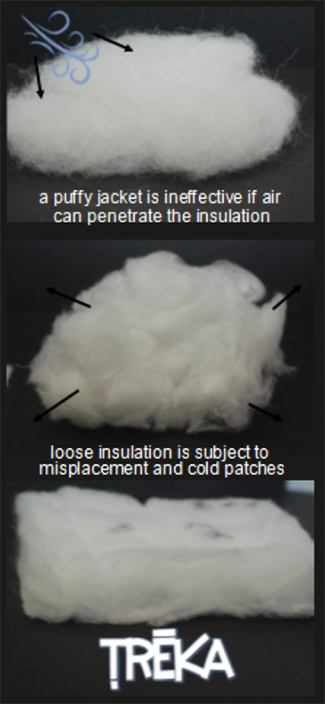 While the puffiest jacket may seem like the obvious choice, this is not necessarily always the case. Instead, warmth comes from the type, quantity and quality of insulation underneath the external jacket.
While the puffiest jacket may seem like the obvious choice, this is not necessarily always the case. Instead, warmth comes from the type, quantity and quality of insulation underneath the external jacket.
Insulation comes primarily in the form of down or synthetic insulation. Down insulation is derived from feathers and/or plumage of geese and ducks. While it can be both lightweight and warm, it loses its ability to insulate when wet. Synthetic fill, constructed from polyester microfibers, mimics the thermal properties of down fill. However, synthetic fill is quick-drying and maintains insulation powers even while wet. Due to its warmth retention properties, it’s the choice of many apparel companies such as TREQA as well as the navy seals.
Placement of the insulation also comes in two varying forms: loose and sheet. Loose can be either stuffed or blown into sections of jackets, while sheet is stitched into the jacket. When done correctly, displacement of sheet insulation is nearly impossible, eliminating the option of the fill shifting and creating cold spots in the jacket. Because of these reasons, TREQA jackets contain only sheet insulation.
Another important factor to note in terms of insulation is the amount within the jacket. While most manufacturers indicate this in the product description, numbers such as ‘4 ounces’ or ‘10 ounces’ may have little relevance to the average consumer without jacket building experience.
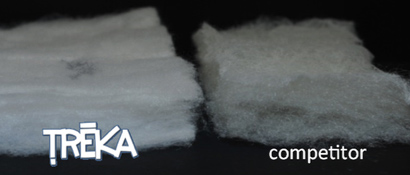 When looking at the number of ounces in a jacket, one must keep in mind the size of the jacket. For example, a short jacket with 10 ounces of top fill insulation will be much warmer than a longer jacket with the same 10 ounces. While more insulation will keep you warmer, the ratio to its jacket size must remain in consideration.
When looking at the number of ounces in a jacket, one must keep in mind the size of the jacket. For example, a short jacket with 10 ounces of top fill insulation will be much warmer than a longer jacket with the same 10 ounces. While more insulation will keep you warmer, the ratio to its jacket size must remain in consideration.
All factors combined, there is a visible difference in insulation. Jargon aside, when a jacket is dissected (left) and the fill is evaluated independently, it is clear which will keep you warmer.
Click here to view a comparison chart showing the insulation found in popular winter jackets.
A Solution to Layering
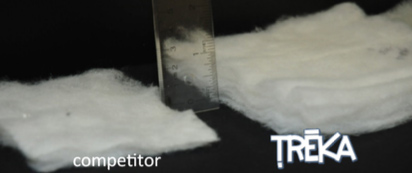 The next aspect of the jacket that must be evaluated is the external layer. A jacket with both reliable insulation and a well-built exterior is one that can be worn alone – through a gentle rainstorm or the harshest winter weather. That’s where the 3-in-1 jacket excels. Three options for three different climates to give you versatility and ease the hassle of layering several jackets that simply don’t fit.
The next aspect of the jacket that must be evaluated is the external layer. A jacket with both reliable insulation and a well-built exterior is one that can be worn alone – through a gentle rainstorm or the harshest winter weather. That’s where the 3-in-1 jacket excels. Three options for three different climates to give you versatility and ease the hassle of layering several jackets that simply don’t fit.
Option 1 – Inner Shell only. This shell can be worn alone for a lightweight, windproof protection against everyday weather. The Inner jacket is Durable Water Repellant (DWR) coated which causes water to bead off in light rain rather than absorbing into the fabric. It also incorporates the features you would expect in a jacket, including zippers and hand warming pockets.
Option 2 – Outer Shell only. The outer shell is made of 3 layer, 100 % waterproof and windproof fabric. Also with the DRW coating, this jacket can be worn alone as a rain jacket through even heavy precipitation. On warmer days, the under-arm vents allow for heat control while still protecting you from wetness. All seams are fully taped, eliminating the opportunity for moisture to enter through the jacket. With style in mind, this also gives you another choice to add variety to your outfit.
Option 3 – Combine the two layers. As you probably guessed, this is the warmest option and gives you the ultimate defense against harsh climates. This is unique from layering due to the fact that the jacket was designed to be combined. The two layers zip together, ensuring protection against both cold and moisture. Whatever outdoor activity you are faced with, this jacket has got you covered!
Each layer should be fully functional, allowing your garment to act as a shield against all forms of harsh weather. Down to each seam taped at the stitch line, extreme attention to detail is a necessity for preventing water from leaking through the jacket.
What’s most important about buying a winter jacket is that you are comfortable in it. Trying to predict how a jacket will withstand freezing climates can be difficult, but with proper knowledge it can be done! At TREQA consumer comfort is at the forefront of our goals, and we hope you will consider us for protecting you against Mother Nature in your next adventure – whether it’s hiking Mount Everest or simply walking your dog!
75 thoughts on “The Science Behind Choosing the Perfect Winter Jacket”
Comments are closed.

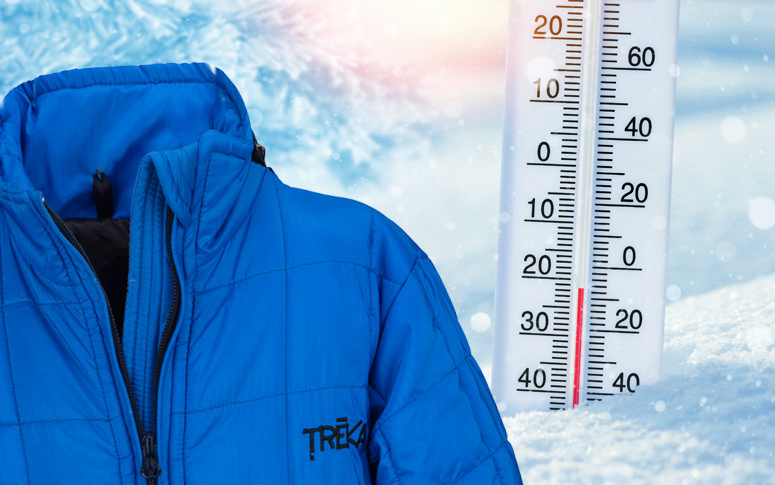
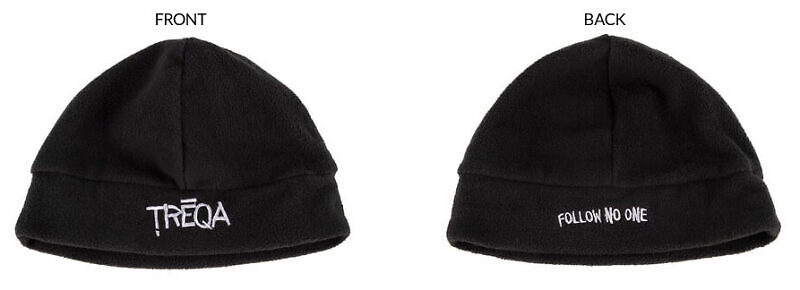
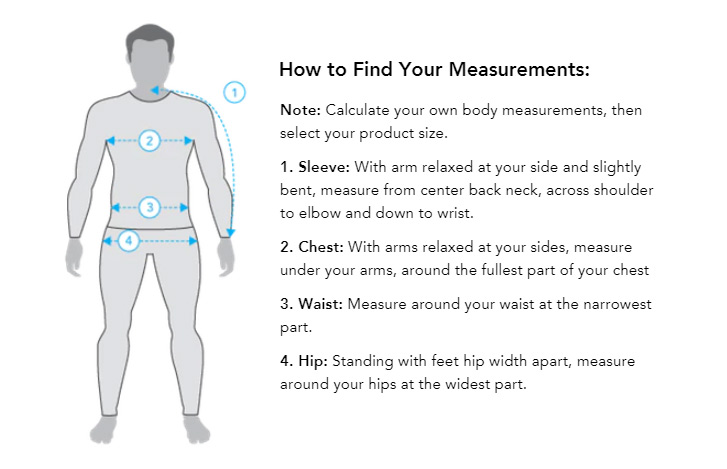
Great information!!!
Treka jackets contain only sheet insulation.!! They sound absolutely wonderful!
I never realized how much better Synthetic fill can be.
Some really good information thatll help for future purchases.
Hi,
My name is Cathy.
I simply learned that we should never judge a book by its cover!
Looks like it will be really warm !
Didn’t think there was so was so much complexity behind jacket making!
I can totally get this…many times withblown insulation you end up with clumps in your jacket after awhile…the insulation just doesnt stay put…also the triple layers are perfect for the various conditions we get on east coast…we can have all seasons in one day…hail..snow …rain..wind…and don’t forget the darn windchill factor
I need that one 🙂
wow what a difference! I prefer the lining in the trekka jacket 🙂
Thin but warm! Way to go!
Great info
You learn something new everyday. I would have never done the comparison. I probably would just be cold. This company seems to have it all. & the fact that you take the time to describe your product in such detail, means your onto something. Way to go after your dreams!
Wow! Super neat!
I didn’t know how important insulation was to the quality of the jacket and for warmth. I will definitely be paying attention when buying jackets from Treka and other companies.
I love that this made with synthetic fill and the many steps you thought about for keeping everyone warm. I live in Canada and can’t wait to try this out.
Synthetic definitly all the way!
As someone who often does winter hiking in the mountains, this is good information to know!
Love that your brand cares about keeping your customers warm as opposed to going for the basic “puffy” look to help your bottom line. Thanks for the lesson on “coat insulation” I am now more aware of what to look for in a quality jacket!
Great read. I always thought down was the way to go. This is a great way to lauer the insulation to keep the cold out.
Great explanation! Good to know all of this 🙂
Love the information and love that’s it’s a Canadian company
ThanK you for this!😍
I had no idea! Very informative on the science of the insulation in a jacket. Bigger isnt always better!
With winter coming faster than I’d like, this is very useful information!
great clothes awesome pri es and good quality best way to go!
I never thought of relating “the ounces” to the size of the jacket. Makes a lot of sense!
this is very useful information thank you 🙂
Love it
Good read. Learnt about proper insulation in jackets.
Synthetic is the way to go, especially living in Canada!
I like brands that explain how their products are made of, glad to read it!
Wow. I never knew these things until I read this. Amazing jackets.
Synthetic is great! Love that it’s Canadian.
Looking forward to your product this winter
Great loooking products!
Love the Canadian background in this company as well as the attention to create a product that is above the rest! Looking forward to winter!
I always have a hard time finding a good winter jacket and a good jacket for hiking. Your products seem like they will fit both!
Thanks for this post! I get outside 5 days a week, 12 months of the year without exception, in all sorts of weather, so a good winter coat for me is essential. I am just about to buy a coat for this season and knowing that sheet insulation is the best choice for over all consistent warmth, Treka will be my choice!
the puffiest jacket may seem like the obvious choice, this is not necessarily always the case
Cool!
It’s all in the stuffing
Interesting on the different types of fillings
Love the insulation features. The jacket I tried on was really warm.
Great information!
Interesting, puffy isn’t always better
Puffy isn’t always the best
This was really informative, puffy isn’t necessarily better.
Looks are quite deceiving when it comes to winter jackets! Puffy isn’t necessarily better! Hmmmm
Puffy doesn’t always mean warm ! Placement, type of material and they way it is layered effects how warm it is. 🤗
Wow, short jackets could give better insulation than long ones
I loved learning about what Treka does differently from the competitors! It’s refreshing to find a brand that doesn’t sacrifice quality for price.
Synthetic all the way
Very informative
Very Exited to try!!
Synthetic is definitely the way to go. It’s a myth that bigger means warmer.
This looks like very high quality winter wear,I want one
Synthetic all the way!
Synthetic can we warmer and dryer than down, and is also kinder 😀
I didn’t realize that down loses it’s warm/effectiveness when wet. Synthetic is the way to go, especially living in Canada where we get wet wink wink
That looks like the perfect Canadian winter jacket for me!
I never realized that there was that much thought that has to go into the insulation of a jacket
This looks pretty awesome! Would love one of these jackets 🙂
This looks pretty awesome! Would love one of these jackets!
Placement of the insulation also comes in two varying forms: loose and sheet.
Great information that I didn’t even know. I will take it into consideration when purchasing a new jacket.
Can’t wait to get a jacket!
Awesome information.
Sounds like a really warm jacket. I learned that a puffy jacket isn’t necessarily warmer it’s what is insulated with.
awesome!
Puffy does not mean warm. Treka seems to be on the ball in making a thin yet warm jacket. Giving full range of motion but not feeling restricted.
Good to know! It’s hard to pick a coat that is useful for so many weather conditions.
Looks cool
Super informative! Treka looks awesome .
I can’t wait for winter so I can feel the insulation of a real jacket.